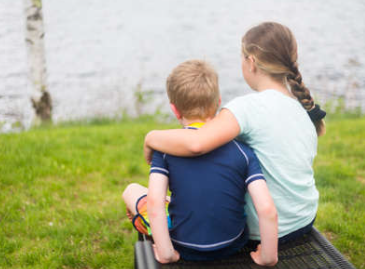Beyond the 1 in 5: Bringing Awareness to the Needs of all of our Children and Youth

Beyond the 1 in 5: Bringing Awareness to the Needs of all of our Children and Youth
We hear the oft-repeated statistic that 1 in 5 of our young people will experience a mental health disorder. But too often, we do not go beyond what that data says, to ask ourselves if it actually reflects the reality of what we experience with our young people on a daily basis.
Research came in, back in the 1980’s, reflecting that epidemiologists and child psychiatrists were pointing to the fact that, on standardized checklists and psychological inventories, an estimated 20 % of 4 to 18-year-old children and youth would present as having a diagnosable mental health disorder (Rae-Grant, Offord, and Boyle, 1989). What that data actually reflected was, compared to children and youth of the same sex and age, a certain number of young people would give clinical evidence of depression, anxiety etc. What this really meant was that on a specific standardized measure, a certain percentage of young people would perform in a certain way that was markedly different than many others.
And this logic and evidence have been used to reflect what the clinical needs are of young people and the extent of services and treatment that is required.
But does it reflect the nature and level of need in our students that we know as teachers to be true on a daily basis?
A good friend and colleague of mine, Dr. Gordon Flett of York University, uses the phrase “flying under the radar of detection” in characterizing those youth who, while they may not measure up to the standard of prior research as being among the 1 in 5, nonetheless, present to us as experiencing sadness, social anxiety, and mistrust, along with other vulnerabilities (Flett, and Hewitt, 2013).
We need to move beyond the 1 in 5; it does not reflect the reality of the subclinical threshold of the needs of our children and youth who also require our care and concern.
Problematic as well is the belief that, if the 1 in 5 represents those children and youth who meet diagnosable levels of distress, then we can ignore the others as simply experiencing a ‘passing phase’ or diminish its significance as simply an ‘adjustment reaction of adolescence’.
The vast majority of mental health challenges that teachers will experience in their students will be situational; reactive to a life event, and not necessarily representative of a prolonged period of distress or debilitating illness. It may be the grief and sadness in a child whose first experience of death comes at the loss of a grandparent, or the reaction of a grade nine student whose awkwardness in trying to establish social connections has been met with rejection.
And what we know regarding what young people in these contexts need from us is a listening ear, a kind voice, and a genuine measure of concern, along with the reassurance that, no, their world is not falling apart, and that with perspective and time, they will learn a life lesson from their experience and move on.

I believe there has been some confusion in what the school-based mental health movement has conjured in the minds of some. We are not looking for educators to become psychologists. Where we think, however, with support and education, that teachers can make an incredible difference, is being part of a system of care. When necessary, that system of care can allow for immediate intervention when the situation calls for it, and / or the identification of further services and interventions where an educator who is competently literate in mental health in children and youth can identify a need and have the resources to support their concern (Doll, Nastasi, Cornell and Song, 2017).
As for the vast majority of children and youth that teachers come into contact with who experience emotional or behavioural distress, embracing the belief that a little bit of the right service, provided at the right time by a trusted adult can head off an escalating sense of vulnerability in many of our children and youth is supported in fact and evidence (Tegethjoff, Stalujanis, Belardi, and Meinischmidt, 2014).
Moreover, if that system of care becomes an integral part of a child or youth’s educational experience, we can promote resiliency and an increased competency if, in a future occasion, a coping strategy that had once been learned was used again when it was needed.
References
Doll, B., Nastasi, B.K., Cornell, L. & Song, S.Y. (2017). School-based mental health services: Definitions and models of effective practice. Journal of Applied School Psychology, 33, 179-194.
Flett, G. & Hewitt, P. (2013). Disguised Distress in Children and Adolescents “Flying Under The Radar” Why Psychological Problems Are Underestimated and How Schools Must Respond. Canadian Journal of School Psychology, 28, 12-27.
Rae-Grant N, Thomas F, Offord D, Boyle M (1989). Risk, protective factors, and the prevalence of behavioral and emotional disorders in children and adolescents. Journal of the American Academy of Child Adolescent Psychiatry, 28, 262-268
Tegethjoff, M., Stalujanis, E., Belardi, A. & Meinischmidt, G. (2014). School mental health services: Signposts for out of school service utilization in adolescents with mental health disorders? A Nationally representative United States Cohort. PLoS ONE [http://journals.plos.org/plosone/article?id=10.1371/journal.pone.0099675]








